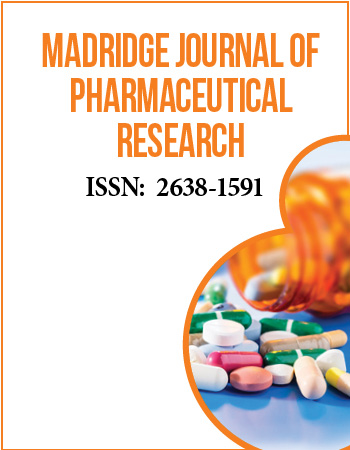International Conference on Medicinal and Pharmaceutical Chemistry
December 5-7, 2016 | Dubai, UAE
Cytotoxic effects of bioactive compounds isolated of Iris persica L. on human cancer cell lines
1College of Science, University of Salahaddin-Erbil, Iraq
2Dipartimento di Chimica, Università di Pavia, Italy
3C.I.St.R.E., Università di Pavia, Italy
Genus Iris (Iredaceae) comprises over 300 species; 12 of them are present in Iraq. Iris persica has been used in Kurdish traditional medicine for the treatment of wound inflammation and tumor. However, Chemical and biological aspects of I. persica have not yet been investigated. The present study reports the first investigation on the isolation and characterization of bioactive compounds from flowers, bulbs and rhizomes of I. persica that has been collected from Kurdistan Region-Iraq and cytotoxicity effect of the isolated compounds against six human cancer cell lines were evaluated. Dry flowers, bulbs and rhizomes of I. persica were exhaustively extracted by maceration at room temperature, solvents of increasing polarity: hexane, methanol, methanol/water 70:30. Chlorophylls were removed from the methanolic extracts of flowers by filtration on a C-18 reversed phase column. Subsequently, the methanolic extracts of the flowers, bulbs and rhizomes were separately fractionated by repetitive preparative MPLC, on C-18 reversed phase, affording four compounds as the major products: tectorigenin (1), embinin (2), isovitexin (3) and trans-resveratrol-3-O-β-D-glucopyronoside (4). The structures of the compounds were identified on the basis of spectroscopic analyses and comparison with literature data.

The cytotoxic activity was measured against six human cancer cell lines, the effects of two isolated compounds, Tectorigenin (1) and embinin (2), on the proliferation of tumor cells were evaluated in comparison with the well-known antitumor drug cis-diamminedichloroplatinum(II) (cisplatin) by MTT assays. In particular, MCF7 and SkBr3 breast, endometrial Ishikawa, ovarian BG-1, mesothelioma IST-MES1 and lung A549 cancer cells were treated for 48h with increasing concentrations of tested compounds. Compound P2 showed a stronger inhibitory activity than cisplatin in five cell lines from total of the six cell lines; MCF7, SkBr3, Ishikawa, BG-1, IST-MES1 and A549, embinin IC50 ± S.D of 6 (±3), 4(±1), 10(±3), 8(±2), 7(±2) and 9(±1) µM. while cisplatin (standard) IC50 ± S.D of 17(±4), 10(±2), 10(±3), 12(±3), 12(±2) and 13(±2)µM respectively.
In conclusion, this is first study on phytochemical study of I.persica as well as cytotoxic acitivity of embinin isolated flowers of I.persica, this study confirms that Embinin could be considered as a natural anticancer. At the same time, the present study confirms the traditional use of Iris persica L. in the treatment of tumor.
Biography:
Faiq H. S. Hussain was born 1953 at Sulaimani city, Kurdistan region, Iraq. He successfully awarded B.Sc. in Chemistry 1976, M.Sc. in Organic chemistry 1978 and Ph.D. in Organic chemistry at Manchester university-UK 1985. He is senior of Organic chemistry at Chemistry department, University of Salahaddin-Erbil. He was Head of Chemistry Department 1992-1998 at college of science, Salahaddin university-Erbil. He has 30 publications in international and local journals. He supervised 21 master students and 8 Ph.D. students in his career. Head of Research group of PROKURUP project, University of Pavia-Italy, 2011 to date with Prof. Giovanni Vidari at department of Organic chemistry.


